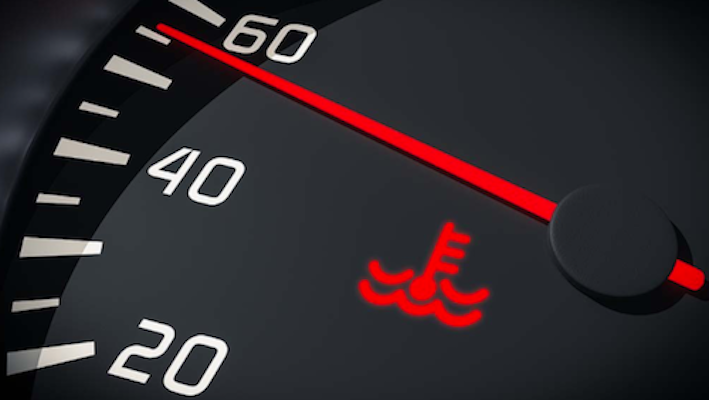If you are like most people, you probably never sat down and read your vehicle’s owner manual from cover to cover. However, it is likely that you may have consulted with your manual on occasion when an obscure warning indicator suddenly showed up on your dashboard.
Your vehicle is equipped with a variety of warning lights that are designed to indicate a problem or potential problem with your vehicle. The most important take-away for anyone reading this is to always take your vehicle’s warning lights seriously. Ignoring warnings can lead to further damage or even a safety issue for you, your vehicle, or your passengers.
In this article, we cover the more common warning lights on your dashboard and explain what they may be telling you. As always, please consult with your vehicle’s owner’s manual. While there are common warning lights for all vehicles, your vehicle may have additional warning lights that are not reviewed here.
Common Warning Lights
Did you know that vehicle warning lights use a color system to indicate the severity of the issue or warning?
You may see warning lights on your dashboard in green, yellow/orange, or the dreaded red. While color is one consideration for the severity of the problem, you also need to take into account the vehicle component(s) that are indicated in the warning light. For example, an orange Check Engine light indicates a problem with the exhaust system that needs to be fixed right away. If you don’t, you could end up damaging your vehicle’s catalytic converter. Other orange or yellow lights, like the Wiper Fluid light or the ABS light also indicate as issue that needs to be addressed that is not critical. When a warning light is red in color, you better act quickly – there is a problem that may cause severe engine damage.
Here’s a breakdown of the more common warning lights and ones that you want to address right away:
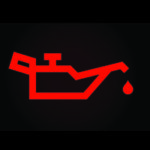 Oil Pressure: This red light indicates that oil pressure is low and may signal a partial or total loss of oil. Oil is critical to lubricating your engine’s parts to keep it moving. If you see this warning light, immediately check your oil level. Do not continue to drive with the Oil Pressure light illuminated. Serious engine damage can result. Instead, have it towed to our shop in Ft. Collins, CO.
Oil Pressure: This red light indicates that oil pressure is low and may signal a partial or total loss of oil. Oil is critical to lubricating your engine’s parts to keep it moving. If you see this warning light, immediately check your oil level. Do not continue to drive with the Oil Pressure light illuminated. Serious engine damage can result. Instead, have it towed to our shop in Ft. Collins, CO.
 Battery Charge: This red light indicates that there is an issue with your vehicle’s charging or power, signaling battery or alternator problems. Be prepared if you do turn off your engine that the vehicle may not restart until you get a jump or recharge the battery.
Battery Charge: This red light indicates that there is an issue with your vehicle’s charging or power, signaling battery or alternator problems. Be prepared if you do turn off your engine that the vehicle may not restart until you get a jump or recharge the battery.
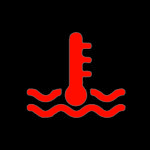 Engine Temperature: This red light indicates that your vehicle’s temperature is above normal. This may signal an issue with your cooling system, such as low coolant or a possible leak. Check your coolant level, fans, and radiator for possible problems. Do not continue to drive your vehicle when the engine temperature light comes on. Safely pull over and have your vehicle towed.
Engine Temperature: This red light indicates that your vehicle’s temperature is above normal. This may signal an issue with your cooling system, such as low coolant or a possible leak. Check your coolant level, fans, and radiator for possible problems. Do not continue to drive your vehicle when the engine temperature light comes on. Safely pull over and have your vehicle towed.
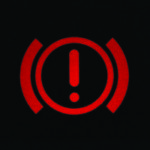 Brakes: This red light may indicate that your parking brake is still engaged. Driving with a parking brake on can severely damage your vehicle. This warning may also indicate a major problem with your braking system fluids or hydraulics. If the parking brake is not engaged, safely pull over and call for a tow. Your vehicle may not be able to adequately stop, putting you and your passengers at risk.
Brakes: This red light may indicate that your parking brake is still engaged. Driving with a parking brake on can severely damage your vehicle. This warning may also indicate a major problem with your braking system fluids or hydraulics. If the parking brake is not engaged, safely pull over and call for a tow. Your vehicle may not be able to adequately stop, putting you and your passengers at risk.
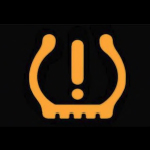 Tire Pressure: This orange light indicates that your tire pressure is low on one or more of your tires. Most vehicles are equipped with a Tire Pressure Monitoring System that tells us when tire pressure goes below standard levels. Make sure to maintain your tire pressure according to recommended levels for your vehicle type and tire size. Keep in mind that tire pressure is different in cold weather conditions vs. warmer weather.
Tire Pressure: This orange light indicates that your tire pressure is low on one or more of your tires. Most vehicles are equipped with a Tire Pressure Monitoring System that tells us when tire pressure goes below standard levels. Make sure to maintain your tire pressure according to recommended levels for your vehicle type and tire size. Keep in mind that tire pressure is different in cold weather conditions vs. warmer weather.
 Anti-Lock Braking System: This orange light indicates a problem with your anti-lock braking system, or ABS, which is a critical aspect of keeping your vehicle safely in contact with the road. This warning may light up initially when starting the vehicle, but if it remains lit after a few seconds you should have it looked at by a service professional at Campus Repair.
Anti-Lock Braking System: This orange light indicates a problem with your anti-lock braking system, or ABS, which is a critical aspect of keeping your vehicle safely in contact with the road. This warning may light up initially when starting the vehicle, but if it remains lit after a few seconds you should have it looked at by a service professional at Campus Repair.

